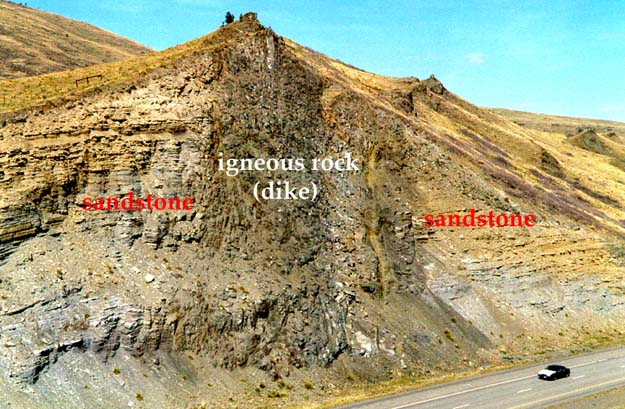|
Like rock, papers,
scissors . . . sort of

This roadcut a few miles south of Cascade
along I-15 illustrates one of the basic
principles used by geologists to determine the
relative ages of rocks. The horizontal layers
are sandstones made up of sediment laid
down near the coast of a shallow sea that was
present here millions of years ago. The darker
rock that cuts vertically through the layers of
sandstone is type of igneous rock formed as
magma solidified beneath the surface. These
types of igneous formations, called “dikes,”
are common in the Cascade area.
Relative age. . .
Since the igneous rock “cuts across” the
sandstone layers, geologists conclude that
the sandstone was there first. In other words,
“relative” to (compared to) the igneous rock,
the sandstone is older. This is called the
“principle of cross-cutting relationships” . . . If
a crack, a fault, a vein, a dike, etc. cuts across
another rock, then that which “cuts across”
happened after the older rock was formed. For
example a crack through part of a sidewalk
could have only happened after the sidewalk
was built.
Absolute age . . .
Determining relative ages of rocks is
important, but where igneous rocks are found
radiometric dating techniques can provide a
more accurate age. The Ar 40/Ar 39 and K/Ar
(potassium/argon) methods can be used for
dating the type of igneous rock shown in the
photo. Geologists have determined the
igneous rocks in the Cascade area solidified
about 75 million years ago. Based on this
“absolute age” of the igneous rock, its fair to
say that the sandstone shown in the photo is
over 75 million years old.
terms: inert, radioactive decay
|


